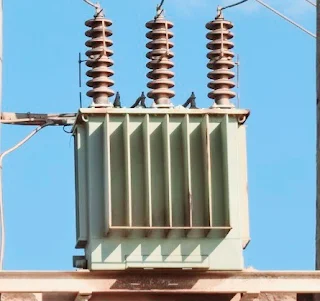Understanding Resonant Transformers: How They Work
Resonant transformers, often referred to as Tesla coils, are specialized electrical transformers that operate based on the principle of resonance. These devices are capable of generating high-voltage, high-frequency alternating current (AC) electricity. Resonant transformers have various applications, from wireless power transmission to radio frequency applications and even impressive electrical displays.
Basic Principle of Resonance
The fundamental principle behind resonant transformers is resonance, a phenomenon that occurs when an inductor and a capacitor are tuned to oscillate at the same frequency. In a resonant transformer, the primary and secondary coils are designed to have matching resonant frequencies. When an AC is applied to the primary coil, it creates a magnetic field that induces a voltage in the secondary coil. Due to resonance, the energy transfer between the coils is maximized, resulting in high voltage output.
 |
| Resonant transformers |
Components of a Resonant Transformer
1.Primary Coil:
This is the coil connected to the power source. It consists of a few turns of thick wire and is responsible for creating the initial magnetic field.
2. Secondary Coil:
The secondary coil has many more turns than the primary coil. It is where the high voltage is generated. The high number of turns allows it to step up the voltage significantly.
3. Capacitors:
Both the primary and secondary circuits include capacitors. These capacitors are crucial for achieving resonance. In the primary circuit, the capacitor stores energy and releases it in pulses, creating oscillations. In the secondary circuit, the capacitor helps tune the circuit to the correct resonant frequency.
4. Spark Gap:
This is a device used to periodically interrupt the current in the primary circuit, creating pulses of high voltage. The spark gap helps in creating the oscillating current necessary for resonance.
Working Mechanism
When an AC power source is applied to the primary coil, it charges the primary capacitor. Once the capacitor is fully charged, it discharges through the primary coil, creating a magnetic field. This magnetic field induces a voltage in the secondary coil. Due to the resonant frequency matching between the primary and secondary coils, the energy transfer is very efficient, resulting in a high-voltage AC output in the secondary coil.
The spark gap plays a critical role by interrupting the current flow in the primary circuit, allowing the capacitor to recharge and discharge repeatedly. This periodic charging and discharging create a series of high-frequency oscillations, which are transferred to the secondary coil.
Applications
1. Wireless Power Transmission:
One of the most promising applications of resonant transformers is in wireless power transfer. By using resonant inductive coupling, power can be transmitted over short distances without the need for physical connectors.
2. Medical Devices:
Resonant transformers are used in medical devices such as MRI machines, where high-frequency magnetic fields are essential.
3. Radio Frequency Applications:
They are also used in radio transmitters and receivers, where they help in tuning circuits to specific frequencies.
4. Educational and Entertainment Displays:
Resonant transformers, particularly Tesla coils, are popular in educational demonstrations and entertainment due to their ability to produce impressive electrical arcs and sparks.
In conclusion, resonant transformers are fascinating devices that leverage the principles of resonance to achieve efficient energy transfer and generate high voltages. Their unique characteristics make them valuable in various applications, from wireless power to medical technology and beyond.


.webp)

.jpeg)

.jpeg)
.jpeg)

.webp)

